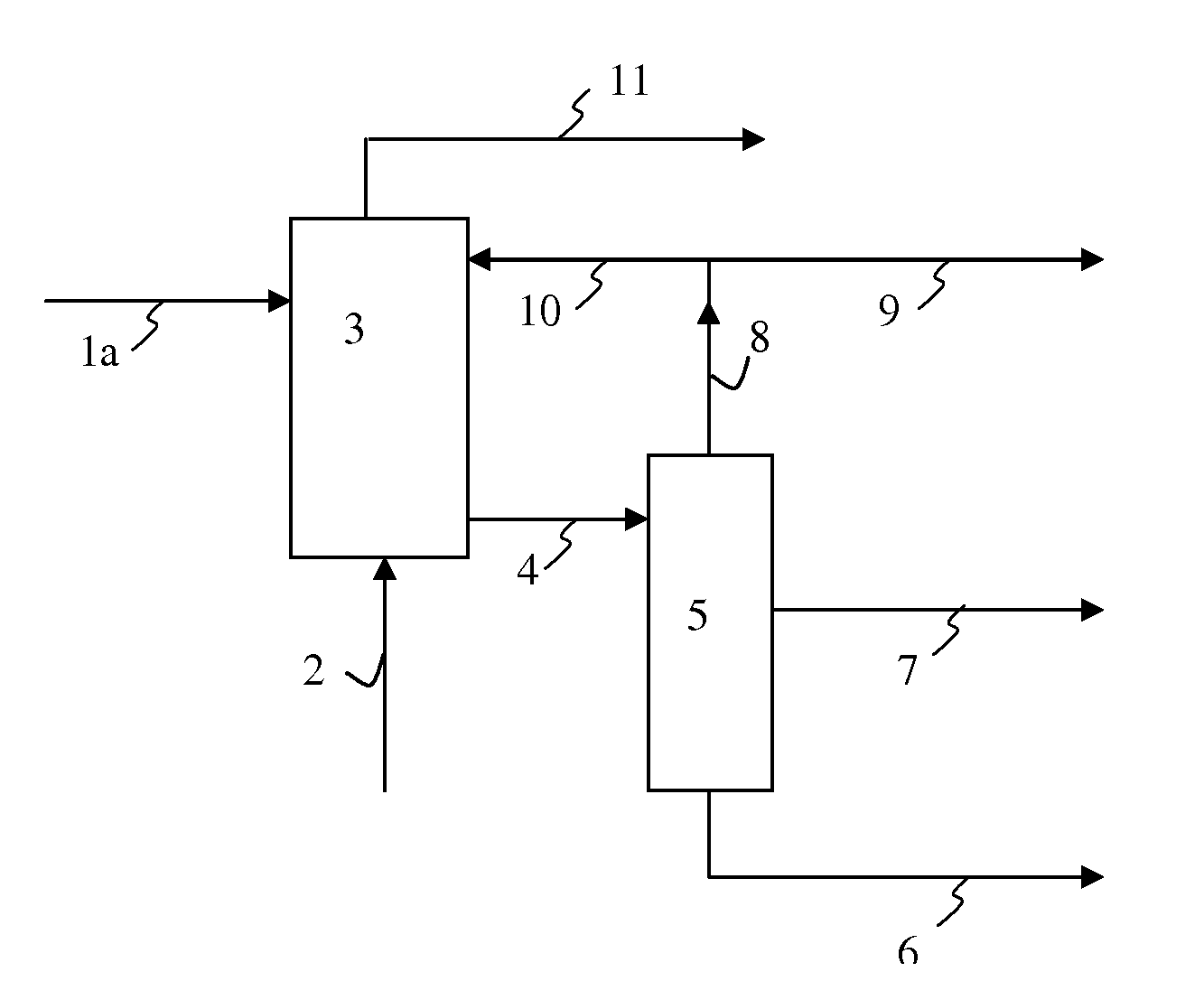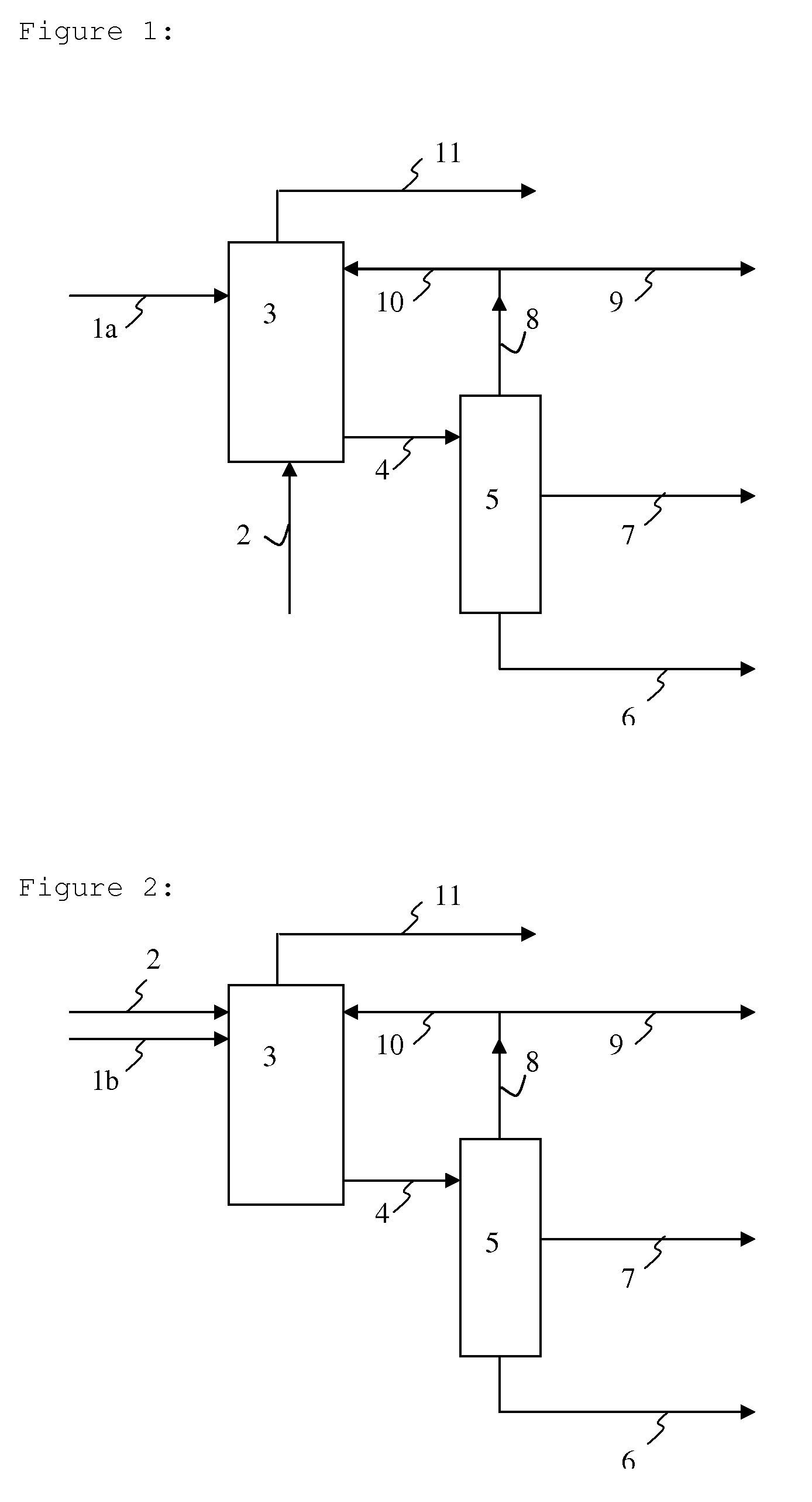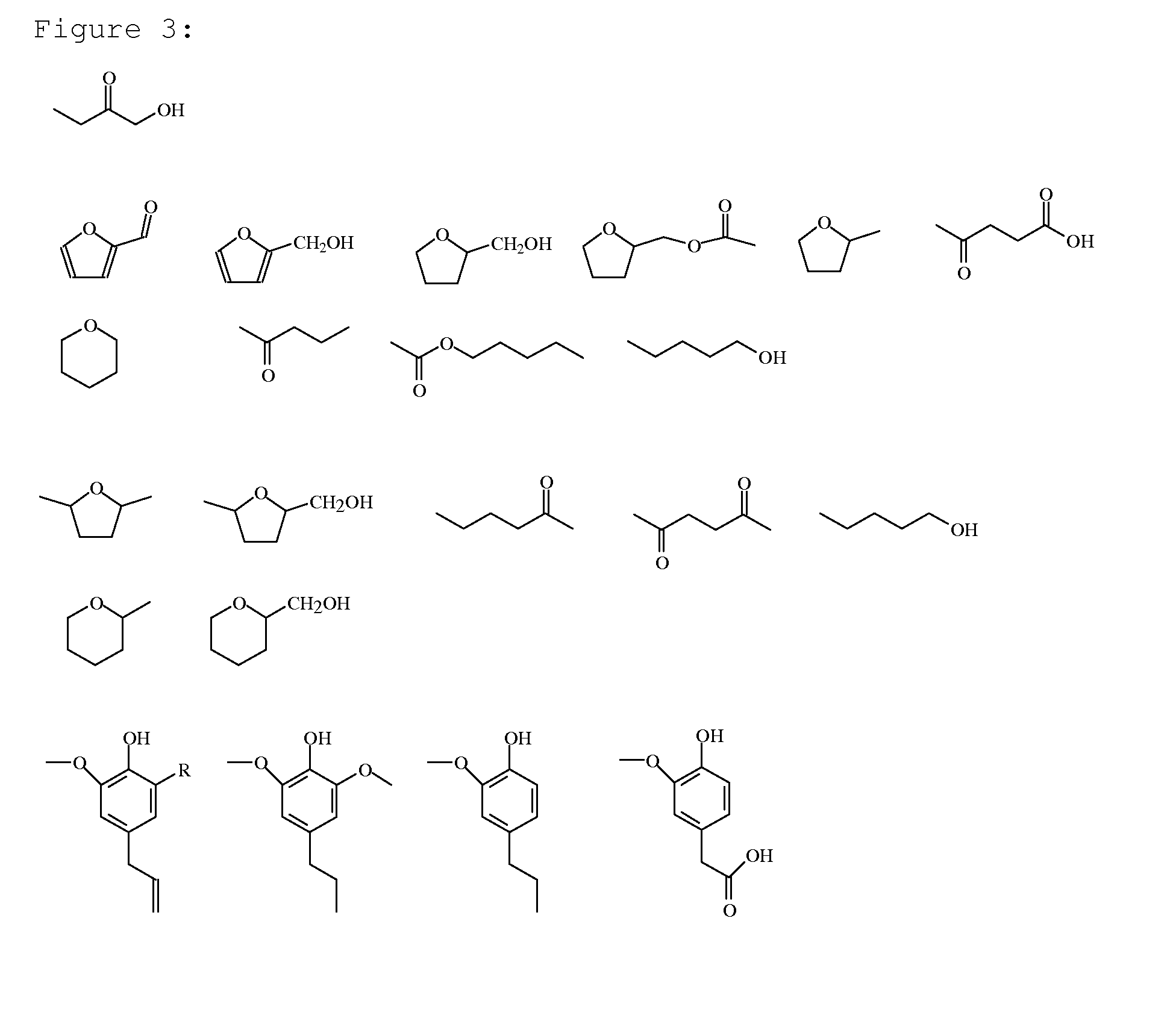Process for liquefying a cellulosic material and its products
a cellulosic material and cellulosic acid technology, applied in the field of cellulosic acid liquefaction and its products, can solve the problems of low value, poor utilization of feedstock, and economic less attractive processing
- Summary
- Abstract
- Description
- Claims
- Application Information
AI Technical Summary
Benefits of technology
Problems solved by technology
Method used
Image
Examples
example 16
[0119]About 3.3 g of Birch wood (particle size <4 mm, semi-dried at 105° C.) was loaded into a 60 mL autoclave together with about 0.1 gram of Palladium as Pd / C catalyst, 21 grams of water, 9 grams of acetic acid, and 0.1 gram of sulphuric acid (H2SO4).
[0120]The autoclave was sealed, pressurized to 50 bar of H2 (except for the comparative example) and heated to a temperature of 200° C. Subsequently the H2 pressure was adjusted to 80 bar. After a reaction time of 90 min the autoclave was cooled to room temperature (20° C.) and opened and appropriate samples were taken.
[0121]The total product, including liquid, tar, insoluble humins and catalyst, was removed from the autoclave. The total product was subsequently filtered over a P3 filter to produce a filtrate and a filter cake. The filter cake was washed with acetone and dried under vacuum (200 mbar) at 50° C. overnight. The dissolved oil (a mixture of monomeric and oligomeric compounds) was analyzed by means of GC, GC / MS, SEC and 13C...
examples 17 and 18
[0126]The experiment as described in example 16 was scaled up by a factor of −5 using the process characteristics as listed in table 5.
[0127]The listed amounts of Birch wood (BW, particle size <4 mm, semi-dried at 105° C.), Palladium (Pd) as Pd-acetate catalyst (only grams metal listed), Water (W), Acetic Acid co-solvent (AA), and sulfuric acid (H2SO4) were loaded into a 250 mL autoclave.
[0128]The autoclave was sealed, pressurized to 50 bar of H2 (except for the comparative example) and heated to a temperature of 200° C. Subsequently the H2 pressure was adjusted to 80 bar. After a reaction time of 90 min the autoclave was cooled to room temperature (20° C.) and opened and appropriate samples were taken.
[0129]The total product, including liquid, tar, insoluble humins and catalyst, was removed from the autoclave. The total product was subsequently filtered over a P3 filter to produce a filtrate and a filter cake. The filter cake was washed with acetone and dried under vacuum (200 mbar...
example 19
[0133]About 3.5 g of Birch wood (particle size <4 mm, semi-dried at 105° C.) was loaded into a 60 mL autoclave (Hastelloy® C22® alloy) together with water (21 g), acetic acid (9 g), sulphuric acid (0.1 g) and Pd / C (2 g, containing 0.1 g Pd).
[0134]The autoclave was closed and pressurised with H2 to 50 bar. Subsequently the autoclave content was heated in 10-15 min to the reaction temperature (200° C.), after which the hydrogen (H2) pressure was adjusted to 80 bar. The hydroliquefaction was continued for 90 minutes. As a result of H2 consumption a small pressure drop of 10-20 bar was observed. The hydroliquefaction was stopped by rapidly reducing the temperature to <10° C., subsequently the hydrogen was vented.
[0135]After opening the autoclave, the total product, including liquid, tar, insoluble humins and catalyst, was removed from the autoclave. The total product was subsequently filtered over a P3 glassfilter to produce a filtrate and a filter cake.
[0136]The filter cake, containing...
PUM
| Property | Measurement | Unit |
|---|---|---|
| pKa | aaaaa | aaaaa |
| wt % | aaaaa | aaaaa |
| Mw | aaaaa | aaaaa |
Abstract
Description
Claims
Application Information
 Login to View More
Login to View More - R&D
- Intellectual Property
- Life Sciences
- Materials
- Tech Scout
- Unparalleled Data Quality
- Higher Quality Content
- 60% Fewer Hallucinations
Browse by: Latest US Patents, China's latest patents, Technical Efficacy Thesaurus, Application Domain, Technology Topic, Popular Technical Reports.
© 2025 PatSnap. All rights reserved.Legal|Privacy policy|Modern Slavery Act Transparency Statement|Sitemap|About US| Contact US: help@patsnap.com



